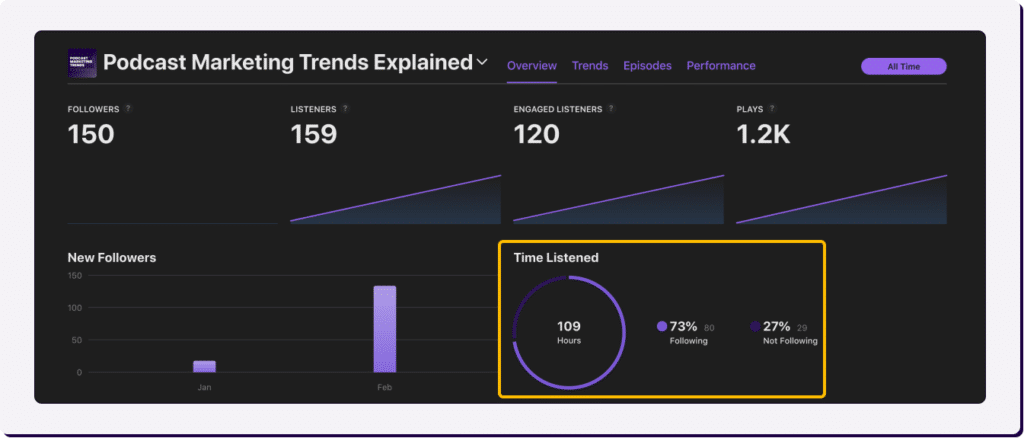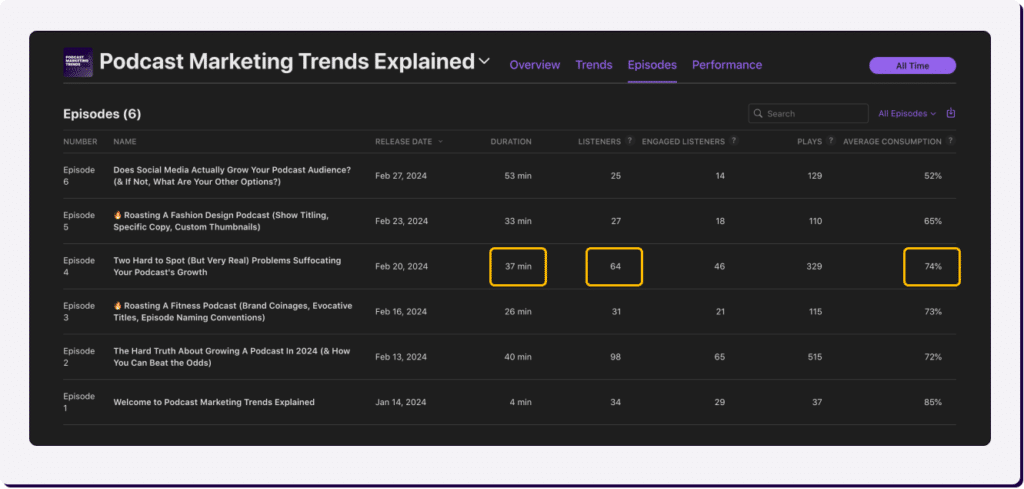Sometimes a seemingly simple question can take you to unexpected and surprising places.
Take this one that’s been bouncing around my head recently:
What are we actually trying to measure by tracking podcast downloads?
Downloads, of course, are the current de facto metric we all use to measure our shows by.
But what if that’s only because they’ve historically been the easiest thing to measure?
Is there another way we could or should be assessing our shows that gives us a more accurate view of their quality, audience reception, and progress?
And if so, why is the entire podcast industry still fixated on downloads alone?
Let’s start by asking the question again:
What exactly are we trying to measure by tracking downloads?
I think we can all agree that we don’t really care about the downloads themselves.
Rather downloads are a shorthand, a representation of something more ephemeral, something less easily defined and measured that we as creators are truly chasing.
But what?
To find out, we need to first ask another deceptively simple-sounding question:
What does a podcast download actually represent?
As a creator, you might imagine each download to represent one human being listening through the entirety of your episode.
From a technical perspective, however… well, let’s just say things start to get messy.
Without getting into the nuanced technical details, a download in your hosting platform or analytics tool could represent everything from:
- A human downloading an episode and listening to it on repeat ten million times…
- To a human downloading an episode and listening to two minutes before stopping…
- To an app requesting a tiny bit of metadata about the episode from your RSS feed
There’s more than a little grey area in other words.
Which means tracking downloads as a primary metric of podcasting progress isn’t all that reliable. Because we don’t know what we’re even measuring.
Which leads to our next seemingly simple question:
What exactly are we as podcasters trying to measure?
I’ll be honest, when I first asked this question myself, I had a hard time articulating what exactly I personally use downloads and other metrics as a shorthand for.
Here’s my working conclusion, however:
By measuring downloads, most podcasters are actually trying to measure the resonance, affinity, and trust their audience feels toward them and their content.
If we think critically, most of us would probably rather have an audience of 5,000 people who set their clocks by our episode release schedule than 50,000 casual listeners who listened to one out of every ten episodes and entirely forgot we existed in the spaces in between.
Which leads us to the next layer of the onion to peel back.
Is there a better way of measuring resonance, affinity, and trust than downloads?
I think there is.
And while it rarely gets discussed, it turns out we already have the tools and metrics available to measure it.
The metric in question?
Listen Time.
Specifically, Listen Time per Listener (LTL).
Unlike downloads, which are blunt metrics that can represent a wide variety of listener (or bot) activity, LTL is a clear representation of how your content is landing with your listeners.
More LTL = More resonance, more affinity, more trust.
Your listeners aren’t stupid. Nor are they lacking in options for where to spend their finite time and attention.
Choosing to spend that time with you and your show, then, is a clear sign that they’re getting something valuable from your content.
Which means your show is delivering on its promise.
So how do you measure Listen Time per Listener?
The bad news is that there’s no universal way to access listen time across all the places your audience engages with your show.
The good news is that Apple Podcasts, at least, spotlights the Listen Time metric front and center in their dashboard.

To calculate your Listen Time per Listener, simply divide your “Time Listened” by your number of “Listeners”.
In the example above, this would be 109 hours / 159 listeners = 0.69 hours (49 min) per listener.
Keep in mind, this is far from a perfect system.
For one, you may not have enough Apple Podcasts listeners for the data to be reliable.
Or, perhaps your Apple Podcasts listeners behave in some drastically different way from listeners on other platforms.
Despite the flaws, however, getting even a rough idea of your average monthly LTL gives you a benchmark that you can then begin to improve upon.
You can use LTL to assess your podcast at both the show level as well as the episode level.
By multiplying your episodes’ Duration x Average Consumption you can identify your Listen Time per Listener per Episode.

In this example, that would be 37 min x 0.74 consumption rate = 27.4 min/listener for the episode in question.
It’s worth noting, that there’s a reason I like to calculate LTL/ep over straight-up Episode Consumption Rate.
Personally, I would much rather have an audience that regularly listens to 30% of my 3-hour episodes (~1 hour/week) than one who listens to 100% of my 10-minute episodes (0.1 hour/week).
Regardless of your business model, the most valuable thing for your business is people spending more time with you.
Because while Listen Time is on the one hand an indicator of resonance, affinity, and trust, it’s also an amplifier of these feelings.
More listen time, then, means more resonance, more affinity, and more trust.
Which are the core ingredients of any successful business.
Better to optimize for them from the start.
And at least for now, Listen Time is the best metric we have to do that.
• • •
Big shoutout to Dan Misener, Jonas Woost, and the team at Bumper who first got me thinking about Listen Time and who have been the loudest advocates of adopting Listen Time as the metric that matters most for indie and branded podcasters alike.





